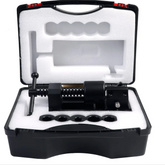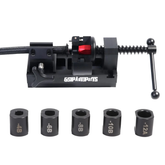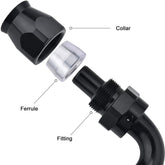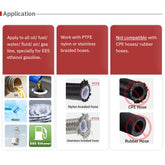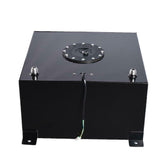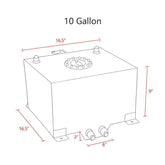Understanding the DEF System
When discussing environmentally friendly technologies for modern diesel engines, diesel exhaust fluid (DEF) systems cannot be ignored. This system is instrumental in cutting down harmful nitrogen oxide (NOx) emissions, particularly in vehicles like the 2018 Ram 6.7 Cummins. It introduces DEF—a blend of urea and water—into the exhaust stream, where it interacts with NOx to form nitrogen and water vapor. These substances are innocuous to the environment.
The DEF system is composed of several key components, including the DEF reservoir, injectors, Selective Catalytic Reduction (SCR) catalyst, and NOx sensors. In this article, we'll provide a comprehensive exploration of the DEF system, delving into its intricacies to offer a thorough understanding of its pivotal functionality in driving cleaner, more sustainable transportation.
What is (DEF)?
DEF is a non-toxic, colorless fluid composed of 32.5% urea and 67.5% deionized water. It is used in Selective Catalytic Reduction (SCR) systems to break down harmful nitrogen oxide (NOx) emissions produced by diesel engines.
- Regulatory Context: Modern environmental regulations, such as Euro 6 in Europe and the Clean Air Act amendments in the United States, require significant reductions in NOx emissions. These regulations have propelled the adoption of SCR technology and the use of DEF in both commercial and personal diesel engines.
- Economic Considerations: The introduction of DEF systems has implications for operational costs and maintenance. DEF is relatively inexpensive, but regular refills are necessary, and the SCR system may require periodic maintenance, including sensor checks and catalyst replacement.
What are the Key Components of the DEF System?
1. DEF Tank: Stores the DEF fluid, typically equipped with a heater to prevent freezing in cold temperatures.
2. DEF Injector: Injects the DEF fluid into the exhaust stream. The amount of DEF injected is carefully regulated by the ECU.
3. SCR Catalyst: Contains a catalyst that facilitates the chemical reaction between ammonia and NOx, converting them into nitrogen and water vapor.
4. Sensors and ECU: Various sensors monitor DEF levels, quality, and system performance. The ECU adjusts the DEF injection rate based on real-time data to ensure optimal performance and compliance with emission standards.
Comparative Analysis with Other Technologies:
Alternative technologies like Exhaust Gas Recirculation (EGR) also reduce NOx emissions but can be less effective at higher loads and may increase fuel consumption. DEF systems offer a more consistent NOx reduction across various operating conditions without significantly affecting fuel efficiency.
How Does the DEF System Work?
The Diesel Exhaust Fluid (DEF) system is a key component of the Selective Catalytic Reduction (SCR) technology used in modern diesel engines to reduce harmful emissions. Here’s a step-by-step explanation of how the DEF system works:
- Exhaust Gas Production: Diesel engines produce exhaust gases that contain harmful nitrogen oxides (NOx) as a result of the combustion process.
- DEF Injection: DEF, a mixture of 32.5% urea and 67.5% deionized water, is stored in a dedicated DEF tank in the vehicle. The system injects a precise amount of DEF into the exhaust stream before the exhaust gases enter the SCR catalyst. This injection is controlled by the engine's electronic control unit (ECU) based on the operating conditions of the engine.
- Thermal Decomposition: As the exhaust gases and DEF mix and pass through the hot exhaust system, the heat causes the DEF to decompose. The urea in the DEF breaks down into ammonia (NH₃) and carbon dioxide (CO₂).
- Chemical Reaction in the SCR Catalyst: The exhaust gases, now containing ammonia, enter the SCR catalyst. Inside the SCR catalyst, the ammonia reacts with the NOx in the exhaust gases. This reaction converts the NOx into harmless nitrogen (N₂) and water vapor (H₂O).
- Emission Reduction: The result of this chemical reaction is a significant reduction in NOx emissions, which are converted into nitrogen and water vapor, both of which are harmless and naturally occurring components of the atmosphere.
Conclusion
By integrating Diesel Exhaust Fluid (DEF) and Selective Catalytic Reduction (SCR) systems, modern diesel engines can achieve compliance with stringent global emissions standards, significantly reducing their environmental impact.
These technologies ensure that diesel-powered vehicles can continue to provide their essential services, from transportation to heavy machinery operation, while contributing to global efforts towards cleaner air. Adopting DEF systems represents a critical step in the automotive industry's ongoing journey toward sustainability and environmental responsibility.

